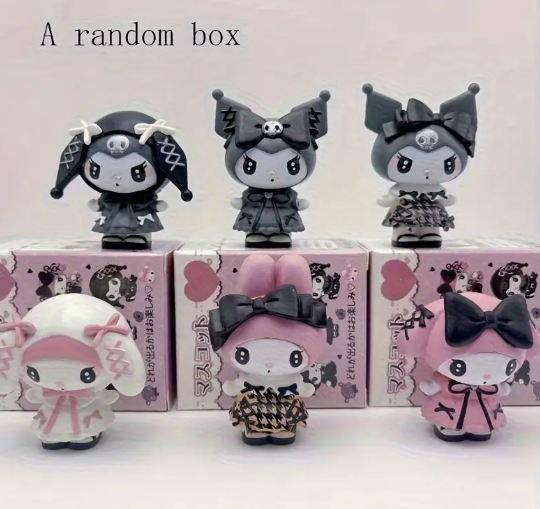The toy industry is one of the most resilient and dynamic markets in e-commerce. In 2024, global toy sales surpassed $130 billion, and forecasts show steady annual growth as families, collectors, and educators continue driving demand. Toys are more than entertainment—they support learning, creativity, and social bonding, which makes them a category that customers return to again and again.
For online sellers, toys represent a balance between stable evergreen demand and fast-moving seasonal trends. On the one hand, classics like puzzles, plush animals, and building blocks never go out of style. On the other, new hits often emerge from movies, social media, or viral moments, creating exciting short-term sales opportunities. This dual nature allows dropshippers to enjoy consistent revenue while also tapping into trending waves.
What makes wholesale dropshipping especially effective in this niche is the low barrier to entry. Sellers don’t need to stock large volumes upfront, yet they can still access a wide product catalog and offer customers fast delivery through the right supplier partnerships. With strong marketing strategies and reliable sourcing, toys can be turned into one of the most profitable and sustainable dropshipping categories in 2025.
What Makes Toys a Strong Category for Dropshipping?
The toy industry is uniquely positioned to thrive in dropshipping because of its consistent global demand and ever-changing product cycles. Unlike many categories that fluctuate with trends, toys appeal to multiple age groups and customer segments—children, parents, gift buyers, educators, and even adult collectors. This diversity ensures sellers are not limited to a single audience.
1. Evergreen Demand with Seasonal Peaks
Toys are a year-round necessity, with sales spiking during holiday periods such as Christmas, Black Friday, and back-to-school seasons. In the US alone, holiday toy sales account for nearly 65% of annual toy revenue, showing just how powerful seasonality can be. For dropshippers, this means a steady baseline of sales with major revenue boosts at predictable times of the year.
2. Product Diversity
From educational STEM kits to plush toys, board games, and outdoor play equipment, the toy market covers multiple subcategories. This variety allows dropshippers to position themselves in high-margin niches while testing new products without heavy upfront investment. With the growing influence of TikTok and YouTube Kids, even a relatively unknown product can skyrocket in demand overnight.
3. Emotional Buying Power
Unlike purely functional items, toys often carry emotional value. Parents are willing to spend more for toys that promise developmental benefits, while children strongly influence household purchase decisions. Studies show that 70% of parents consider educational value a top factor when buying toys, making items like puzzles, coding kits, and building blocks especially appealing in 2025.
4. E-commerce Growth and Accessibility
Online toy sales continue to expand, with digital marketplaces accounting for more than 40% of toy purchases in the US Dropshipping gives sellers a low-risk entry point into this growing space by eliminating warehousing costs while still offering competitive pricing and variety to customers.
In short, toys combine stable year-round demand, fast-moving viral trends, and broad customer appeal, making them one of the most strategic categories for dropshipping entrepreneurs in 2025.
Key Factors to Consider Before Selling Toys Online
Selling toys online may seem straightforward, but the toy industry comes with unique regulations, consumer expectations, and market dynamics that every dropshipper needs to understand before launching a store. Choosing the right products and ensuring compliance can be the difference between steady growth and costly mistakes.
1. Safety Standards and Compliance
Toys are heavily regulated for safety reasons, especially in major markets like the US and Europe. Products must meet standards such as ASTM F963 in the US and CE certification in Europe. Parents are highly conscious of toy safety, and failing to comply with these regulations can lead to account suspensions or customer disputes. Always confirm that your supplier provides proper compliance documentation.
2. Age Appropriateness and Labeling
Toys must be marketed and packaged according to the correct age group. For example, choking hazard warnings are required for items with small parts intended for children under 3 years old. Mislabeling can not only harm your brand reputation but also violate platform policies.
3. Seasonality and Inventory Planning
Toys experience predictable demand spikes during Q4 and major shopping events. In 2024, US toy sales during November–December alone exceeded $13 billion, accounting for nearly two-thirds of the year’s total. Dropshippers need to anticipate these peaks by preparing marketing campaigns and securing reliable fulfillment in advance.
4. Trends and Virality
Toy demand is strongly influenced by social media and entertainment trends. A single viral TikTok video or a character from a blockbuster movie can send sales soaring. Staying updated with platforms like TikTok, YouTube Kids, and Instagram Reels gives sellers an edge in spotting new opportunities early.
5. Margins and Shipping Costs
While many toys are lightweight and inexpensive, larger products like ride-on cars or outdoor play sets may incur high shipping costs. Dropshippers should balance trending items with those that offer sustainable profit margins after accounting for shipping fees.
6. Return and Replacement Policies
Toys are prone to returns—sometimes because of defects, sometimes simply because children lose interest quickly. Having suppliers who support flexible return policies and maintain consistent product quality is crucial for customer satisfaction and brand loyalty.
By addressing these factors from the outset, sellers can build a trustworthy toy brand that meets safety requirements, delivers value, and competes effectively in the highly dynamic toy market.
Bestselling Toy Niches for Dropshipping in 2025
The global toy market is forecasted to surpass $145 billion in 2025, with e-commerce capturing a steadily growing share of those sales. For dropshippers, this means focusing on toy niches that combine high demand, strong consumer trends, and manageable logistics. Here are some of the most profitable toy categories to consider:
1. Educational & STEM Toys

Why It Sells: Parents are increasingly investing in toys that combine fun with learning, especially those that develop skills in science, technology, engineering, and math.
Trend Factor: The global STEM toy market is expected to grow at over 7% CAGR through 2025, fueled by rising interest in coding robots, puzzle kits, and interactive science sets.
Profit Potential: Many STEM toys are priced higher than standard toys, giving dropshippers room for stronger margins.
Store Strategy Tip: Curate collections around themes like “Future Innovators” or “Coding for Kids” to appeal to aspirational parents.
2. Collectibles & Blind Box Toys

Why It Sells: Collectible toys tap into the thrill of surprise and repeat purchases. Blind boxes encourage customers to buy multiple items to complete a series.
Trend Factor: Collectibles remain one of the fastest-growing segments, contributing over $10 billion annually in sales across the US and Europe.
Profit Potential: Low unit cost and recurring purchases make this niche attractive for long-term customer value.
Store Strategy Tip: Offer bundles or loyalty discounts for buyers looking to complete sets.
3. Licensed Character Toys

Why It Sells: Kids and collectors are drawn to toys from movies, games, and shows like Disney, Marvel, or anime series.
Trend Factor: Licensed toys accounted for 31% of the global toy market in 2024, showing consistent dominance.
Profit Potential: While licensing increases wholesale costs, demand is so strong that sellers can maintain healthy markups.
Store Strategy Tip: Watch upcoming film and game releases to stock relevant products before demand spikes.
4. Outdoor & Active Play Toys

Why It Sells: Families continue to seek toys that encourage outdoor activity—such as scooters, water blasters, and sports sets.
Trend Factor: With wellness-focused parenting trends rising, outdoor toy sales grew by 8% year-over-year in 2024.
Profit Potential: Larger items can command high ticket prices but require careful shipping strategies.
Store Strategy Tip: Use seasonal campaigns—promote water toys in spring and summer, and snow-themed sets in winter.
5. Plush & Comfort Toys

Why It Sells: Soft toys remain timeless, appealing to children and even adults who enjoy “comfort plushies.”
Trend Factor: TikTok trends like “giant plush pillows” continue to generate viral demand, especially among Gen Z.
Profit Potential: Lightweight, easy to ship, and low return rates make plush toys ideal for dropshipping.
Store Strategy Tip: Add personalization options such as embroidered names to increase perceived value.
6. Eco-Friendly Toys

Why It Sells: Parents are prioritizing sustainable options, from wooden toys to recycled plastic playsets.
Trend Factor: Surveys show 64% of parents are willing to pay more for eco-conscious toys in 2025.
Profit Potential: Green products often command premium pricing, improving dropship margins.
Store Strategy Tip: Highlight sustainability benefits in your product descriptions to resonate with eco-conscious shoppers.
7. Interactive & Tech Toys

Why It Sells: From app-connected drones to AR puzzles, tech-driven play experiences excite both kids and parents.
Trend Factor: The interactive toy market is projected to grow by over 9% CAGR through 2027.
Profit Potential: Higher average selling prices mean stronger profit per sale.
Store Strategy Tip: Focus on trending subcategories like kids’ smartwatches and beginner drones.
Where to Source Toys Wholesale for Dropshipping
Finding the right supplier is one of the most critical decisions when selling toys online. Unlike other categories, toys come with specific challenges—safety certifications, seasonal spikes in demand, and rapidly changing trends. Choosing reliable wholesale dropshipping partners ensures you always have access to trending inventory while minimizing risks.
1. Global Sourcing Marketplaces
Platforms like Alibaba or Global Sources are well-known entry points for toy sellers, offering a vast variety of products directly from manufacturers. However, sellers need to carefully evaluate suppliers’ compliance certificates and factory audits to avoid issues with safety regulations, especially in the US and European markets.
2. Specialist Toy Wholesalers
Dedicated toy distributors in the US often provide faster delivery times and better compliance with local regulations. While costs can be higher than overseas sourcing, local wholesalers reduce shipping times and allow sellers to better handle Q4 holiday surges.
3. Dropshipping Platforms with Flexible Fulfillment
For beginners, using a professional dropshipping service can simplify sourcing and logistics. Platforms like CJdropshipping are particularly useful because they don’t just provide access to thousands of toy SKUs but also handle product sourcing on request, quality checks, and flexible fulfillment options.
Sellers can take advantage of:
-
Wide product coverage: From plush toys to STEM kits, CJ offers a large catalog while also sourcing trending items upon request.
-
Inventory flexibility: You can stock inventory in advance during peak seasons like Christmas, or rely on on-demand fulfillment for everyday sales.
-
Platform integrations: CJ integrates with more than 15 e-commerce platforms including Shopify, eBay, WooCommerce, TikTok Shop, Shopee, Lazada, and more, helping sellers automate order processing.
-
Customization services: Options like custom packaging and branding allow toy stores to stand out in a crowded market.
4. Balancing Speed and Margins
While overseas sourcing often provides lower unit costs, domestic suppliers ensure faster shipping. A smart strategy for toy dropshippers is combining the two—stocking high-demand items locally for quick delivery while sourcing niche or seasonal toys internationally at lower cost.
In short, sourcing toys successfully comes down to balancing compliance, fulfillment speed, and product variety. Platforms like CJdropshipping provide flexibility by letting sellers mix wholesale stocking and direct dropshipping, making it easier to adapt to both evergreen demand and sudden viral toy trends.
Profit Strategies for Toy Dropshipping Success
Selling toys online can be highly rewarding, but profit margins can shrink quickly if you only focus on volume. A sustainable toy dropshipping business requires clear strategies that balance pricing, positioning, and fulfillment. Here are proven ways to maximize returns:
1. Focus on Evergreen Niches Alongside Trends
While trending toys like fidget spinners or collectible cards can bring quick profits, they often have short lifecycles. Evergreen categories—such as educational toys, plush animals, and building kits—ensure long-term revenue. By running a mix of fast-moving seasonal products and stable evergreen lines, sellers can maintain consistent cash flow year-round.
2. Leverage Seasonal and Holiday Peaks
Toys are heavily influenced by the holiday calendar, with Q4 (October–December) often accounting for nearly half of annual toy sales in the US Smart dropshippers prepare inventory in advance or partner with suppliers that allow private stocking in local warehouses. This reduces delivery delays and helps sellers capture premium pricing when demand spikes.
3. Bundle Products to Increase Average Order Value (AOV)
Instead of selling toys individually, offer bundle deals like “STEM learning kit + puzzle set” or “plush bear + accessories.” Bundles not only raise AOV but also make price comparison harder for buyers, helping protect margins.
4. Position Toys as Gifts, Not Just Products
Marketing toys as birthday gifts, holiday presents, or back-to-school essentials allows sellers to target emotional purchase decisions. Gift packaging, customized cards, or limited-edition themes also justify higher markups while creating a memorable unboxing experience.
5. Control Shipping Costs Strategically
Shipping fees can eat into profits, especially for bulky toys. A smart approach is to choose suppliers with multi-warehouse fulfillment options. For example, storing fast-moving SKUs in US or EU warehouses ensures competitive delivery times while keeping international shipping for niche, less urgent products.
6. Invest in Quality and Compliance
Cheap toys without proper safety certification might offer higher margins upfront but can result in chargebacks or account suspension. By ensuring compliance with CPSIA (US) and EN71 (EU) standards, sellers not only reduce risk but also position themselves as trustworthy, allowing them to charge higher prices.
7. Differentiate Through Branding
With toys, emotional appeal and trust drive repeat purchases. Sellers who use custom packaging, branded inserts, or even personalized toy variations (like name-engraved puzzles) build stronger customer loyalty. Dropshipping suppliers that support branding and customization make this strategy much easier to implement.
Beginner-Friendly Tips for Selling Toys Online
Getting started with toy dropshipping can feel overwhelming, but breaking it down into simple steps makes the process much more approachable. Here are beginner-friendly strategies to help new sellers build a strong foundation and avoid costly mistakes:
1. Start Small, Test, and Scale Gradually
Instead of launching with dozens of toy categories, focus on 3–5 niches such as plush toys, STEM learning kits, or puzzles. This allows you to understand customer demand, monitor margins, and refine marketing campaigns before expanding your catalog.
2. Research Trends, But Don’t Chase Every Hype
Platforms like TikTok and YouTube Kids frequently spark toy crazes, but not every trend has staying power. Use these viral moments strategically, but balance them with evergreen toys that will continue to sell throughout the year.
3. Prioritize Safety and Transparency
Parents and gift buyers are highly sensitive to product safety. Always include clear age recommendations, product descriptions, and safety notes in your listings. This builds trust and reduces returns.
4. Optimize Listings for Search Visibility
Amazon, eBay, and Shopify toy stores are competitive. Use keyword-rich product titles and bullet points to improve SEO within these marketplaces. High-quality product images—especially lifestyle shots of kids playing—help increase conversion rates.
5. Build Strong Supplier Relationships
Relying on unreliable suppliers is a common mistake for beginners. Choose partners that provide quality checks, flexible fulfillment, and local warehouse options to keep customers happy. Reliable supply chains give beginners confidence to scale without worrying about stock-outs or delayed deliveries.
6. Use Paid Ads Wisely
Toys appeal strongly to emotions, making them ideal for Facebook, Instagram, and TikTok ads. Start with small daily budgets to test creatives, then scale winning campaigns. Video ads showing kids interacting with toys often outperform static images.
7. Provide Excellent Customer Service
In the toy industry, fast responses and flexible return policies matter. Parents buying gifts want assurance that items will arrive on time and meet expectations. A good customer service experience often leads to repeat orders for birthdays, holidays, and special occasions.
By following these steps, beginners can steadily build confidence, avoid common pitfalls, and position their toy dropshipping business for growth in 2025.
Final Thoughts: Building a Profitable Toy Dropshipping Store in 2025
Toys have always been more than simple products—they create memories, shape learning, and spark joy. That emotional connection is exactly why toys remain such a powerful category in dropshipping. With global toy sales projected to exceed $120 billion by 2025, there is still plenty of room for new sellers who can position themselves strategically.
Success in toy dropshipping doesn’t come from chasing every viral product, but from balancing timeless classics with well-researched trends. Sellers who invest in quality product listings, reliable supply chains, and strong customer service will naturally stand out in a competitive market.
The real opportunity lies in turning small wins—like a successful plush toy or puzzle campaign—into long-term revenue streams. This means refining your niche, building customer trust, and creating a store that parents and gift-buyers return to year after year.
In 2025, the most profitable toy dropshipping businesses will be those that think beyond transactions. They will focus on offering safe, creative, and joyful experiences for children while ensuring smooth, professional operations behind the scenes. If you approach the market with patience, strategy, and the right suppliers, your toy store can grow from a side hustle into a reliable and scalable business.
